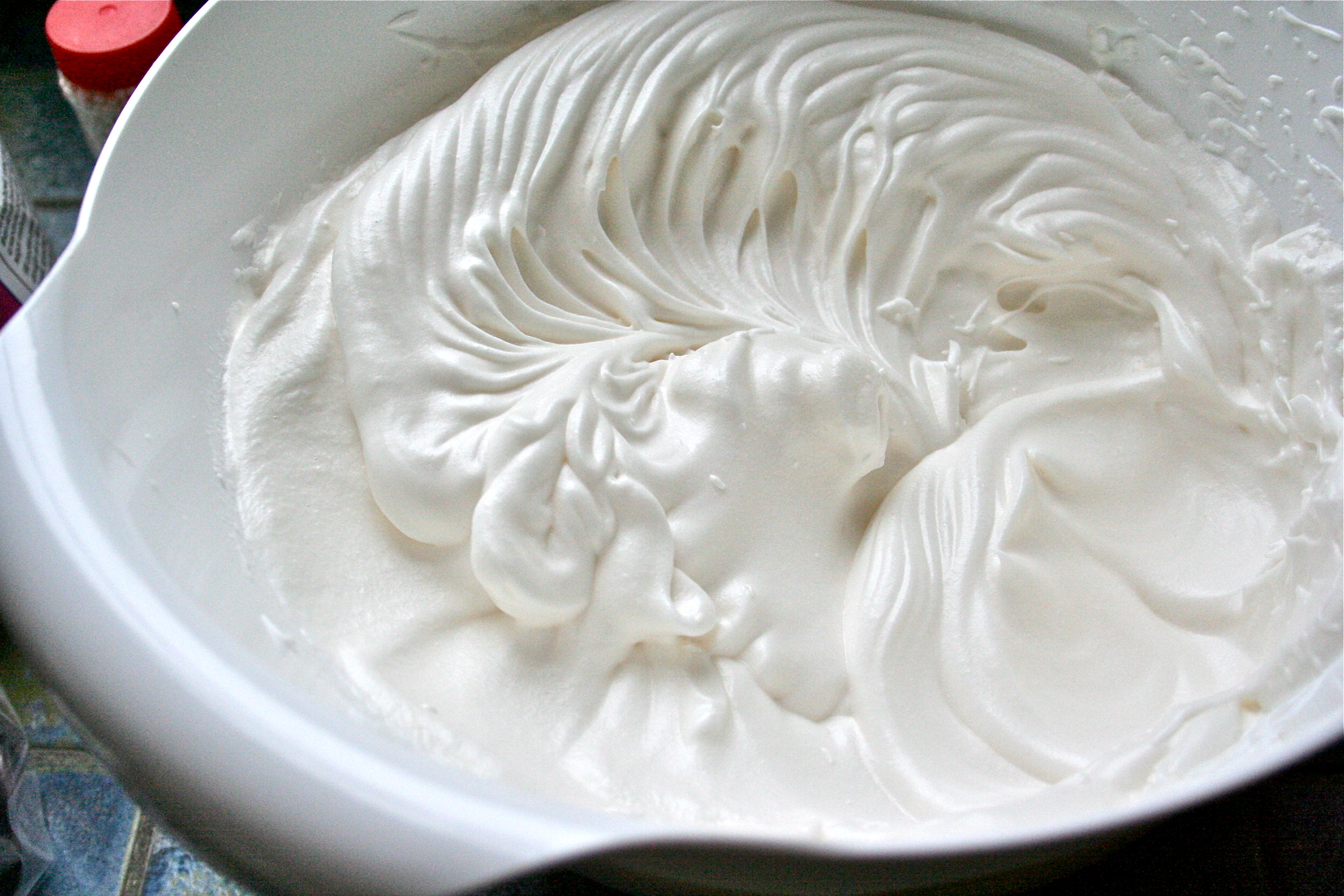

Mousses are made with sweet cream, not very thick one whips it, which makes it foam, and it is this foam that one uses: one may give it whatever flavor one wants, with aromatics, flours, fruits, wines, or liqueurs. Les mousses se font avec de la crême bien douce & peu épaisse on la fouette, ce qui la fait mousser, & c'est de cette mousse qu'on fait usage: on peut lui donner tel goût que l'on veut, aromates, fleurs, fruits, vins, ou liqueurs. Whipped cream can be flavored with sugar, vanilla, coffee, chocolate, orange, or other flavorings. In some jurisdictions, sales of canned whipped cream are limited to avoid potentially dangerous nitrous oxide abuse. A common brand in the United States is Reddi-Wip. Other names for cream sold in an aerosol can are skooshy cream (Scottish), squirty cream, spray cream, or aerosol cream. The gas is typically nitrous oxide, as carbon dioxide tends to give a sour taste. When the pressure is released, the gas leaves solution, producing bubbles. A gas dissolves in the butterfat under pressure. Whipped cream may also be made instantly in an aerosol can or in a whipping siphon with a whipped-cream charger.
:max_bytes(150000):strip_icc()/vanilla-chantilly-cream-recipe-1375640-hero-01-5c8e7353c9e77c0001ff0acc.jpg)
Various other substances, including gelatin and diphosphate, are used in commercial stabilizers. Many 19th-century recipes recommend adding gum tragacanth to stabilize whipped cream, while a few include whipped egg whites. The bubbles in the whipped cream immediately start to pop, and it begins to liquefy, giving it a useful lifetime of one to two hours. Results are best when the equipment and ingredients are cold. Methods of whipping Ĭream is usually whipped with a whisk, an electric hand mixer, or a food processor. Low-fat cream (or milk) does not whip well, while high-fat cream produces a more stable foam. If, however, the whipping is continued, the fat droplets will stick together, destroying the colloid and forming butter. The resulting colloid is roughly double the volume of the original cream. ĭuring whipping, partially coalesced fat molecules create a stabilized network that traps air bubbles. The cream used as whipping cream has a high butterfat content-typically 30%–36%-as fat globules contribute to forming stable air bubbles. Whipped cream is also called Chantilly cream or crème Chantilly ( French pronunciation: ). It is often sweetened, typically with white sugar, and sometimes flavored with vanilla. As you whisk, you’ll notice that the cream will begin to get bubbly and then thicken.Whipped cream is heavy cream, double cream, or other high-fat cream that is whipped by a whisk or mixer until it is light and fluffy and holds its shape, or by the expansion of dissolved gas, forming a firm colloid. Pour cold heavy whipping cream into your mixing bowl and whisk it at high speed. The easiest way to make this recipe is with an electric mixer fitted with the whisk attachment. Some people insist that powered sugar or superfine sugar work better, but I haven’t found that to be the case. These all have slightly different fat percentages, but they will all work well.Īlthough only cream is required, I also like to sweeten things up with the addition of granulated sugar and a touch of vanilla extract. If you want a more technical explanation of this, read the Cook’s Illustrated article on whipped cream temperature.ĭepending on where you live, you may also see heavy whipping cream sold as heavy cream, whipping cream, or double cream. The fat in the cream collapses easier when it is warmer. It is essential that your heavy whipping cream be cold. The only required ingredient to make Chantilly cream is cold heavy whipping cream. Crème Chantilly is made from whipping cream, but you can also make sweetened whipped cream by adding some granulated sugar or icing sugar.


 0 kommentar(er)
0 kommentar(er)
